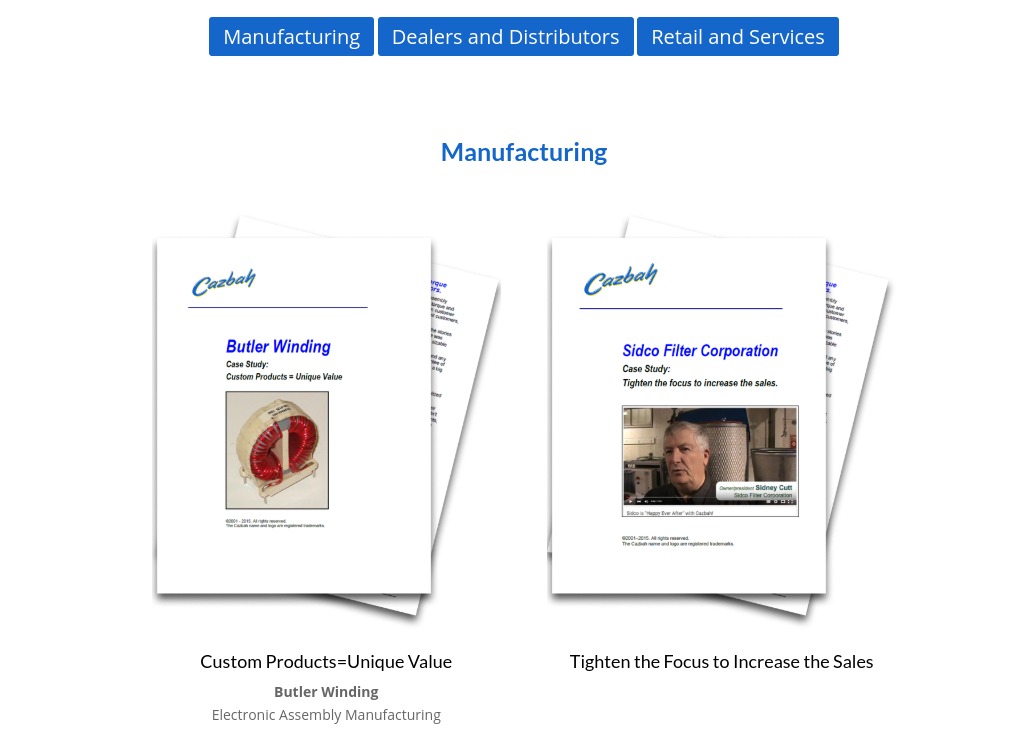
With the ability to have a huge impact on potential customers, case studies are a fantastic sales tool. Client case studies allow you to easily show off some of your best accomplishments to help you attract more of your ideal customers!
The hardest part of writing a client case study is knowing exactly what to include. Sometimes a small business has a great customer success story they’d like to share, but don’t really know how to put it into words on paper.
Here’s a quick and easy outline you can use to help you nail down a great client case study you can publish on your website:
How to Write a Client Case Study for Your Small Business Website
A good case study is composed of six basic sections:
1. Summary
2. Back story
3. Problem
4. Solution
5. Outcome
6. Resolution
You want to make sure you give your readers the full story of your client when they read their case study. Just like if you were writing a short story, you need to give background information, illustrate the problem, and then fully explain the solution and outcome.
We at Cazbah have published several case studies on our clients in a variety of industries. If you’re looking for a more visual example, feel free to check out our case study page here!
1. Summary
Start off by writing a summary of your project. What is the case study about, what was the specific problem, and how was it resolved? Keep this brief so that readers can get the gist of the project and “click to learn more” if they’re interested.
Your summary should be no more than a few sentences, or a brief paragraph. Write your summary as a quick overview of what’s to come.
2. Back Story
Here is where you would introduce your client and share their back story. Set the stage so that readers understand what type of industry they’re reading about and how this client fits with your company.
Just like how an author will describe and characterize the characters in a novel, this is your section to explain to your readers who the subject of your case study is.
3. Problem
This is the easy part. Explain what exactly you were hired to do. Clearly describe the situation and the struggles your client was facing.
How or why did the problem occur? Had your client tried to solve the problem before and failed to do so? State why your business is uniquely capable of handling the particular issues of your client. You want to show your value here!
4. Solution
This is your time to play the hero of the story! How did you fix the problem? Explain exactly how you did it. What did your company do that was so great? You want to lay out the steps you took and why you decided on that course of action. A reader reviewing this section of the case study could very well have the same problem as your client and may be looking to work with a business who they know can solve their problem.
This is your time to shine, so really go into depth here about your competitive advantage and explain why this client chose your company!
5. Outcome
So, what were the results? What happened at the end of the project? The audience will want to know!
Be sure to back up what you write with data if you can, there is nothing better than having proof of your performance. Demonstrate how the products or services you provided to your client positively impacted them. There’s nothing wrong with flaunting you and your client’s success a bit here.
6. Reflection
The reflection is the conclusion of your client case study. Readers have stuck with the story for this long, so you can feel free to make this section a bit lengthier and relaxed. Discuss what worked, what didn’t work, and what made it such a success. Use quotes from different team members or your client so readers can understand things from their point of view. It’s also nice to include any key takeaways that you learned while working on the project.
Case studies make for a great addition to your website. Unlike a blog or a whitepaper, there is no long term commitment. You can write a case study when you genuinely have an awesome client story to share. Your client case study can be in a short format (around 500 words) or if you have more to say, you can go super in-depth (with 1,500 -2,000 words). There is no right or wrong, it’s all about appealing to your target audience!
In Conclusion
Every small business is unique. The best way to demonstrate your uniqueness and success as a small business is by providing an actual example to your audience, a client case study. If you’ve been working on something different or innovative, go on and toot your own horn a bit. Just make sure you can back it up!

